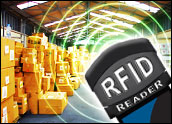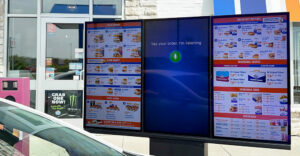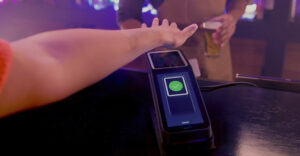
Global shipments of scanners that read wireless tags used to track products in business supply chains climbed 14 percent in this year’s first quarter compared to the same period a year ago, according to figures released Wednesday by ABI Research, of Oyster Bay, N.Y.
The research firm also revealed that total scanner shipments in 2005 reached 35,000.
“The traction in this market is certainly slower than the hype set it up to be, but it’s good traction,” observed Justin Hotard, director of product management at Symbol Technologies, of Rockville, Md., one of the world’s largest makers of RFID readers.
“The reason that it appears slow compared to what’s expected is that there’s a lot of business process change associated with it,” he explained.
“What we’re seeing is customers taking a facility or a small number of facilities, rolling out RFID, proving the business case, learning from it, then rolling it out more broadly,” he said. “But those broader roll-outs haven’t happened in scale yet. Our expectation is that they will really start to ramp up in ’07.”
New Database
ABI’s numbers cover only scanners used to track passive RFID tags operating in the UHF frequency and conforming to the EPC/ISO18000 standard.
Release of the shipment tallies by ABI inaugurated operation of its new RFID Reader Market Database.
“By aggregating quarterly RFID reader shipment data from the industry’s top suppliers, we are pleased to be the first in the industry to provide a truly accurate quantification of this fast-growing market,” Michael Liard, ABI Practice Director for RFID and Contactless, said in a statement.
Focus on UHF Readers
He added that the new database has a core focus on passive supply chain technologies, particularly those employing UHF technologies.
“Future updates to our market metrics will include additional frequency ranges, active technologies, and other applications,” Liard told CRM Buyer.
If all readers were covered in ABI’s analysis, total shipment numbers would be “significantly higher,” he explained.
Natural Fit
That’s because the largest segment of the market is in high- and low-frequency readers. Those readers are used for security card control, passport verification and contactless payments.
High-frequency applications are strong in situations that require one-to-one transactions, observed Symbol Technologies’ Hotard.
“You’re not going to have 10 people paying for something at once,” he declared. “You’re always going to have the individual swiping their card in front of the reader.
“The value of UHF is that it can see a lot of things in an environment, yet still see a single item,” Hotard added. “That’s why the supply chain fit is such a natural.”
Vision Change
The initial vision of RFID was retail-centric, noted Jean Kaplan, a research analyst with IDC in Framingham, Mass.
“Over the past year, a broader look is being taken at RFID as an enabling technology for all industries,” he told CRM Buyer.
In the next couple of years, he continued, it will be determined which industries are going to find the best uses for RFID and what the infrastructure will look like to support it.
Currently, tags are selling in bulk in the five- to 10-cent range per tag, he said. For RFID to become more broadly deployed, that price will have to drop, he maintained.
“If you’re looking at millions and millions of tags, it adds up,” Kaplan said.
Dancing With Wal-Mart
The passive RFID market received a big jolt forward when Wal-Mart announced in 2003 that it wanted its top 100 suppliers to start using RFID tags by 2005.
Because of that mandate, it was expected that many companies would integrate RFID throughout their operations. But that hasn’t been the case, according to Kaplan.
“Compliance with Wal-Mart’s mandate means that items shipped to Wal-Mart have to be tagged,” he explained. “That doesn’t mean your internal organization has to use RFID ubiquitously.
“What a lot of suppliers have done,” Kaplan continued, “is tag only items going to Wal-Mart and not tag them going to anyone else. They haven’t reengineered their item production process to take advantage of RFID.”











































